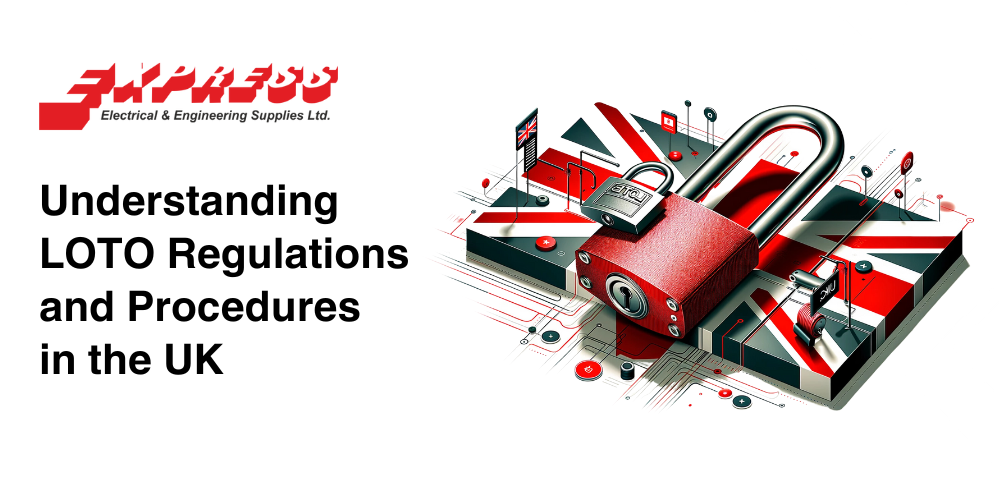Understanding LOTO Regulations and Procedures in the UK

Read time: 4 minutes
When it comes to workplace safety, understanding the nuances of Lock Out Tag Out (LOTO) regulations and procedures is essential, especially for industries operating within the UK. This comprehensive guide aims to clarify the LOTO requirements, compliance, types, responsibilities, and more, ensuring that your organisation adheres to the highest standards of safety.
What is LOTO?
LOTO definition: LOTO is a acronym for "Lock Out Tag Out", a safety procedure that ensures dangerous machinery and energy sources are properly shut off and cannot be restarted unexpectedly during maintenance or repair work, preventing serious injuries or fatalities.
What are LOTO Requirements?
LOTO requirements in the workplace encompass a comprehensive set of guidelines and protocols aimed at safeguarding employees from hazardous energy sources during maintenance or repair activities. These requirements go beyond merely shutting down equipment and involve a structured approach to energy control.
These requirements typically include:
- Proper identification and isolation of energy sources
- Locking and tagging out these energy sources
- Verification that the energy has been effectively isolated
See Master's Lock's 7 Important Steps to Lockout / Tagout for more information.
Is LOTO a Regulation in the UK?
In the UK, LOTO is not governed by a specific entity or regulation titled "LOTO"; however, it is covered under the Health and Safety at Work etc. Act 1974 and the Provision and Use of Work Equipment Regulations 1998 (PUWER). These regulations require employers to implement appropriate energy control procedures, which include aspects of LOTO practices.
What is LOTO Compliance?
LOTO compliance involves adhering to the legal and safety standards set by regulatory bodies. For UK workplaces, compliance means following the guidelines set forth by the Health and Safety Executive (HSE) to mitigate risks associated with hazardous energy during machine maintenance.
What are LOTO Hazards?
LOTO hazards refer to the risks associated with the unexpected energisation or release of stored energy in equipment, which can cause harm to individuals performing maintenance or servicing tasks.
What are the Responsibilities of LOTO Procedure?
Responsibilities under LOTO procedures typically involve:
- Employers - Providing the necessary LOTO equipment, training, and policy framework.
- Employees - Following the LOTO procedures, using the equipment correctly, and attending training.
- Maintenance Staff - Applying LOTO devices and verifying isolation before commencing work.
How to Write a LOTO Policy?
A LOTO policy should:
- Outline the scope and purpose of the policy
- Define roles and responsibilities
- Describe the procedures for identifying, isolating, and controlling hazardous energies
- Provide details on the types of LOTO devices used and their proper application
- Establish training requirements and procedures for authorisation
- Include procedures for removing locks and tags
- Set forth enforcement measures and disciplinary actions for non-compliance
How often should LOTO be audited?
The frequency of LOTO audits can vary depending on the organisation's policies and the complexity of the equipment. However, it is generally recommended that LOTO procedures be audited at least annually to ensure ongoing compliance and effectiveness.
What are the 4 Types of LOTO?
There are generally four types of LOTO:
- Electrical Lockout
- Isolates electrical power to prevent electrocution or fires.
- Uses devices like circuit breaker lockouts and plug covers.
- Mechanical Lockout
- Controls mechanical motion to prevent crushing or cutting injuries.
- Involves securing machinery with devices like valve and cable lockouts.
- Hydraulic Lockout
- Prevents the release of energy in systems using pressurised fluids.
- Uses valve lockouts to stop fluid flow and depressurise the system.
- Pneumatic Lockout
- Applies to compressed air or gas systems to prevent unintended activation.
- Involves closing valves and bleeding off pressure using couplings and valve lockouts.
What is the LOTO Tag Standard?
LOTO tags are standardised to ensure visibility and durability. They must contain a warning, such as "Do Not Operate," and include the name of the authorised person who placed the tag, and the date of tagging. The design should withstand environmental conditions and be tamper-evident.
Do LOTO Locks Have to be Red?
While there is no strict regulation stating that LOTO locks must be red, red is a commonly used colour due to its association with danger and stop signals, enhancing visibility and awareness. Many other colours are available including: yellow, blue, green, orange, purple and black.
Why Use a Nylon Shackle Instead of Steel?
Nylon padlocks offer a few advantages over steel padlocks, particularly in the context of Lock Out Tag Out (LOTO) procedures:
- Non-Conductive - Nylon is non-conductive, which reduces the risk of electric shock when used to lockout electrical hazards.
- Corrosion Resistant - Unlike steel, nylon does not rust or corrode, making it ideal for use in harsh environments or where there is exposure to chemicals.
- Lightweight - Nylon padlocks are lighter than steel padlocks, making them easier to carry, especially when numerous locks are required.
- Non-Sparking - For environments where spark risks must be minimised, such as in flammable or explosive atmospheres, nylon padlocks that contain minimal or no metal reduce the risk of creating a spark.
What is the difference between LOTO and Lototo?
LOTO is the standard practice of locking and tagging out equipment. Lototo (Lockout, Tagout, Tryout) includes an additional step of trying out the equipment after lockout and tagout to ensure that it will not operate, thereby providing an extra layer of safety verification.
Understanding and implementing LOTO regulations and procedures is vital for maintaining a safe work environment in the UK. By staying informed and compliant, employers can protect their employees and avoid potential legal repercussions. Always refer to the latest guidelines from the HSE and consider consulting with a safety professional to ensure your LOTO policy is up to date and effective.
Sources: